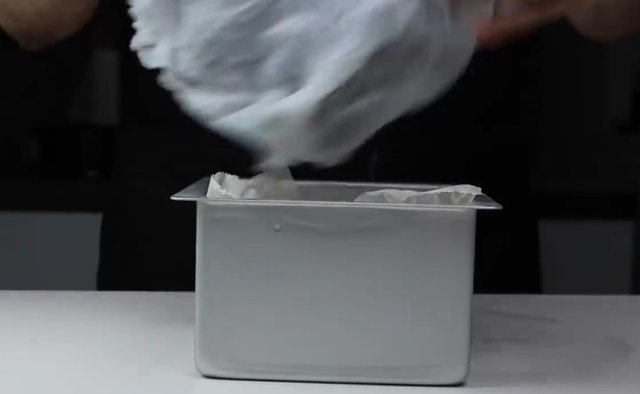The Gallura region extends to the north of Sardinia along a stretch of steep coast, characterized by long and narrow inlets, granite rocks and islands such as the Magdalena Archipelago.
The main cities and towns are Olbia, Tempio Pausania, La Maddalena, Arzachena and Calangianus. It is part of the province of Sassari.
The first human settlements in Gallura date back to approximately 30.000 years ago, when the first populations crossed the strait between Tuscany and Sardinia. This historic period is known as the Stone Age. Foreign populations colonize Gallura due to its numerous natural resources.
Many people from the nearby island of Corsica came as well to Gallura during this historic period.
The mid-late neolithic Arzachena culture subsisted almost exclusively in this area, and here is found the remains of perhaps the oldest megalith on Sardinia, at Li Muri.
 |
| The Gallura region extends to the north of Sardinia along a stretch of steep coast, |
The Gallura region.
Around Santa Teresa di Gallura and up to the promontory of Capo Testa, there are some wonderful beaches.
Long and narrow inlets, granite rocks and islands characterize the Gallura region.
The local people speak the "gallurés". A diasystem of the Sardinian, closely connected with the Corsican.
While to the east (province of Arzachena) extends the
Costa Esmeralda , the most famous and known stretch of Sardinian coast in the world, to the west, around
Santa Teresa di Gallura and to the promontory of Capo Testa, there are some wonderful beaches that they have nothing to envy to the most emblazoned and famous of the island.
 |
| Nuraghe_Izzana_(1600 a.C.) |
Beach The Liscia (Porto Liscia).
The
beach of Porto Liscia is the first one to be found when leaving the territory of Palau and heading northwest towards the
coast of Santa Teresa di Gallura .
This sandy area is characterized by a beautiful
granite golden sand and has a total of about 2 km, from a reef covered with
Mediterranean vegetation to the mouth of the river Liscia, from which it takes its name.
The sea, on the other hand, is notable for having a
low background with
crystalline waters of iridescent color between the emerald green and the azure blue.
 |
| The Beach of Porto Liscia is the first one they find when leaving the territory of Palau. |
Beach The Licciola.
A few kilometers to the west, in the town of
Valle dell'Erica , is the beautiful beach of
La Licciola.
The beach is characterized by a
clear sand of medium grain and some reefs in the sand that make it an even more suggestive beach. The crystalline sea has a low background and a color between green and intense blue, as we move away from the shore.
From here, in addition, you can admire a
beautiful panorama that includes from the nearby
reef of the Colombaia to the
island of Spargi that is glimpsed in all its splendor to the horizon.
 |
| La Licciola beach is characterized by a clear medium-grained sand and some reefs in the sand. |
Beach of Cala Sambuco.
Cala Sambuco is a small beach
in the shape of a crescent , characterized by clear sand and crystal clear waters of green and light blue and dark tones. The background is rounded stones and reefs that emerge from the water while all around is Mediterranean vegetation of an intense green that colors the landscape.
Quiet and isolated, this free beach has no services and is especially appreciated by lovers of snorkeling.
To get there from Santa Teresa di Gallura you have to go east, following the signs for
Marazzino and turn left following the signs for La Diana restaurant, always proceed straight, go over the junction and turn left and then the right by a dirt road that is called, precisely, Cala Sambuco Road.
 |
| Cala Sambuco is a small crescent-shaped beach, characterized by clear sand and crystal clear waters. |
Beach of La Marmorata.
The beach of
Marmorata , with its shallow waters and clear sand, with a splendid sea of green and turquoise waters, is surely one of the most beautiful in northern Sardinia.
To complete the magnificent panorama there is a
homonymous island that can be reached by swimming from the coast and where you can
visit the remains of an ancient Roman quarry.
The beach is
equipped with all the services : ample parking, bars, restaurants, possibility of renting umbrellas, sun beds and pedal boats.
Read also: Those who opt for a holiday in Sardinia can meet a variety of interests.
You can also practice
snorkeling, windsurfing and other water sports, while
trekking enthusiasts can venture on the many paths that lead to the charming coves nearby.
 |
| At La Marmorata Beach you can practice snorkeling, windsurfing and other water sports. |
The beach of Rena Bianca.
A few steps from the historic center of Santa Teresa di Gallura, the beach of Rena Bianca is one of the most famous in Sardinia.
The beach takes its name from the fine white sand that together with the pink coral fragments that make up the sand, create a unique color, embellished by the clear blue of the sea and the green of the Mediterranean vegetation that surrounds it.
It is no coincidence that in 1987 the beach of Rena Bianca received the recognition of Blue Flag of Europe.
Equipped with all
services, it is very easy to get to the beach from the center, which is why it is always
very busy, especially in the high season months such as July and August.
 |
| A few steps from the historic center of Santa Teresa di Gallura, the beach of Rena Bianca is one of the most famous in Sardinia. |
Beach of the Two Seas (Rena di Levante and Rena di Ponente).
From Santa Teresa di Gallura, traveling along Via Capo Testa, you reach the isthmus, on whose sides you can find the beaches of
Rena di Levante (east)
and
Rena di Ponente (to the west).
Rena di Levante is a long stretch of white sand, surrounded by rocky coves and Mediterranean vegetation and thanks to its crystal clear waters has been on several occasions Blue Flag. Further on there is a second stretch of coast, known as Zia Culumba beach (Santa Reparata Bay), which houses suggestive remains of Roman-era columns, also visible underwater.
To the south,
Rena di Ponente is a beautiful beach of soft golden sand that is characterized by a sandy area of medium dimensions surrounded by wild and solitary nature, especially behind the promontory of Capo Caccia, bathed by a crystalline and green sea. In the vicinity there are several services: bars, restaurants, hotels and shops.
 |
| To the south, Rena di Ponente is a beautiful beach of soft golden sand that is characterized by a sandy area of medium dimensions. |
 |
| Rena di Levante is a long stretch of white sand, surrounded by rocky coves and Mediterranean vegetation. |
Cala Espinosa beach.
Cala Spinosa is an authentic hidden paradise, ideal for those who seek to relax away from the movement of beach bars.
Read also: In Italy There Are Approximately 1500 The Most Important Museums Of The World Heritage Museum.
To get there you will have to follow the indications for the
Capo Testa lighthouseand continue on foot along a steep path, but we assure you that your efforts will be rewarded. The sand is presented with a background of
clear sand alternated with suggestive granite rocks.
The
beautiful seabed with varied and fascinating scenarios will delight lovers of diving and snorkeling.
 |
| Cala Spinosa is an authentic hidden paradise, ideal for those looking to relax away from the madding crowd. |
Cala Grande beach (Valle de La Luna).
The beach of
Cala Grande is reached through a suggestive path in the
Valley of the Moon, named for its gigantic
white granite massifs , shaped by the ancient erosion of the wind. The highest reaches 128 meters above sea level and is known as
La Calavera.
A fantastic setting that accompanies the coves and the lush Mediterranean vegetation, where you can still find a hippy community that, from the 60s , settled down in this magical place, immersed in the beauty of the primordial and distant nature of the daily frenzy.
Still today you can find
travelers from all over the world, artists, musicians and people with an
adventurous spirit who come to the valley in search of peace and tranquility.
Safety pin!
 |
| The beach of Cala Grande is reached through a suggestive path in the Valley of the Moon. |
La Liccia Beach.
La Liccia is a beach of fine white sand that overlooks a crystalline sea about 5 km from Santa Teresa di Gallura.
Little crowded and with wide open spaces is the ideal place to relax.
The beach and its shallow seabed is especially suitable for bathing and for the children to play while its transparent and crystalline waters are especially suitable for
underwater excursions.
 |
| La Liccia is a beach of fine white sand that overlooks a crystalline sea about 5 km from Santa Teresa di Gallura. |
Rena Majori beach.
Rena Majori is located in the homonymous town of Aglientu, about 7 km from Santa Teresa di Gallura. The beach, with
very fine and clear sand, is surrounded by reefs and granite rocks that look out over a beautiful
turquoise sea.
Crossed by
two rivers (Cantaru River and Ciuchesa River) the extensive stretch of Rena Majori is always quiet and sheltered, as it is surrounded by dunes covered with vegetation and rocks. Behind it, the
presence of a pine forest guarantees a pleasant and cool shelter in the hot summer days.
Among the
services present, a large parking lot and a campsite, the possibility of renting umbrellas, sun loungers and roller blades. Its seabed is extremely varied and rich in fish, making it a destination especially suitable for underwater dives.
 |
| Rena Majori is located in the homonymous town of Aglientu. |
We have reached the end of this
top 10 on the most beautiful beaches to see in Santa Teresa di Gallura and surroundings, aware that there is nothing more difficult than making a "classification" of the beaches of Sardinia.
Do you know any other beautiful Sardinian beach that we did not include in this brief summary?
Well, nothing simpler! Add it in the comments area with all your data.








































 apparently in the Viper (Vipera aspis) frequenting warmer and dry environments. Very interesting are the colonies of Luscengola (Chalcides chalcides) in high altitude meadows where it is also possible to see the Orbettino (Anguis fragilis), Sauri with reduced or absent limbs.
apparently in the Viper (Vipera aspis) frequenting warmer and dry environments. Very interesting are the colonies of Luscengola (Chalcides chalcides) in high altitude meadows where it is also possible to see the Orbettino (Anguis fragilis), Sauri with reduced or absent limbs.












